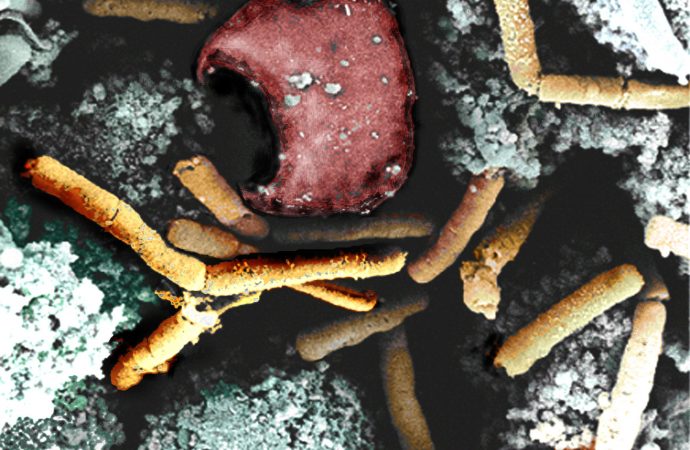The word ‘terrorism’ is in everyone’s minds these days. Add the prefix ‘bio’ before and you make it even scarier. From Smallpox, Polio, Cholera, Ebola to Zika, those tiny creatures feed on human blood and insecurity. You cannot see them with the naked eye, but you know they can kill you without mercy.
For Robert Stevens, those tiny creatures had a tragic impact on his life. In October 2001, he was the first person to die from anthrax inhalation in 25 years in the United States. The episode happened only a few days after the 9/11 attacks, when several letter containing the deadly disease were mailed to media companies and US senates.
Besides Stevens, four other people died from anthrax inhalation and, since then, the words anthrax and bioterrorism became almost inseparable. If another bioterrorist attack were to happen, anthrax would most likely be the chosen weapon, since its spores are easily spread in the environment, they can be easily inserted in food, sprays and powders and, most importantly, its efficacy as a biological weapon is already proven, in several occasions.
How does anthrax kill?
Anthrax is a disease caused by Bacillus anthracis. Infection occurs after the bacteria’s spores enter the blood stream of other organisms, mainly by one of these three routes: pulmonary, cutaneous and gastrointestinal.
[su_spoiler title=”Pulmonary” style=”fancy” open=”yes”]Infection by inhalation is the less frequent but the most likely to happen in a bioterrorist attack. It was the case for Robert Stevens. After opening the anthrax letters, thousands of deadly spores traveled through Stevens’ lungs without any notice. There, they were eaten by Stevens’ immune cells, migrating to his lymph nodes, where they were then able to multiply. After being admitted in the JFK Medical Center, Stevens suffered several seizures and died three days after. [/su_spoiler]
[su_spoiler title=”Cutaneous” style=”fancy” open=”yes”] Cutaneous infection occurs mainly after humans come into contact with wool, hair or bones of infected animals. A small break or fissure is sufficient for Bacillus anthracis to penetrate the skin and infect humans. Thus, farmers, veterinarians and wool workers are more proned to get anthrax via this route. [/su_spoiler]
[su_spoiler title=”Gastrointestinal” style=”fancy” open=”yes”]Poorly cooked meat from sick animals is the most common cause of gastrointestinal infections by anthrax. After spores are deposited in the gastrointestinal track, they cause oral ulcers, fever, vomiting and other severe complications. Diagnosis is rarely made on time and victims die within 2 or 3 days after infection, via bowel perforation and shock. [/su_spoiler]
The key to Bacillus’ ability to infect people is the presence of the so-called virulence factors, called plasmids pXO1 and pXO2. [expand] While pXO2 plasmid is responsible for the formation of a capsule necessary for infection mechanisms, pXO1 is responsible for the production of toxins that cause cell death and edemas [/expand]
Inside the host, Bacillus anthracis takes the form of vegetative cells. However, when there is a lack of certain nutrients, the bacteria forms spores, which are released into the environment and are responsible for spreading the disease. Koch and Pasteur contributed greatly to the understanding of the disease mechanisms in the 19th century, by studying how anthrax-infected animals were able to contaminate humans.
Preparedness vs. Ignorance
But are microorganisms, such as the Bacillus anthracis, secretly plotting a bioterrorist attack on the human race? That is not quite the case: one can only speak of bioterrorism when the virus, bacteria, or other types of organisms or toxins, are deliberately released to cause illness or death. There must be a human brain orchestrating it.
Bioterrorism harms mostly by creating a sense of permanent fear. As long as that sense prevails, terrorism wins. But while public’s fear is the triumph of bioterrorists, preparedness might prevent a calamity. Governments draw endless guidelines, citizens struggle to stay informed on potentially fatal organisms and Universities try to educate their students. The University of New South Wales, in Australia, prepared a Bioterrorism and Health Intelligence course for professionals involved in bioterrorism preparedness in modern days. To demonstrate the content of the course and to give a perspective of what a bioterrorist attack might look like, the University created a fictional series called Pandemic.
[su_youtube_advanced url=”https://youtu.be/bVvUGWkHlUQ” width=”520″ height=”320″ responsive=”no”]Pandemic[/su_youtube_advanced]
The line is thin between awareness and panic. But keeping citizens in ignorance never resulted in any good for society; and while fear might be the fuel of bioterrorism, preparedness might as well be the fire-blanket that will keep the house from burning.
References:
Goel, A. (2015). Anthrax: A disease of biowarfare and public health importance World Journal of Clinical Cases, 3 (1) DOI: 10.12998/wjcc.v3.i1.20
Riedel S (2005). Anthrax: a continuing concern in the era of bioterrorism. Proceedings (Baylor University. Medical Center), 18 (3), 234-43 PMID: 16200179
Anderson, P. (2012). Bioterrorism: Toxins as Weapons Journal of Pharmacy Practice, 25 (2), 121-129 DOI: 10.1177/0897190012442351
Ten Years Ago Today the Anthrax Nightmare Unfolded, and Globalized
Timeline: How The Anthrax Terror Unfolded
F.B.I., Laying Out Evidence, Closes Anthrax Case





